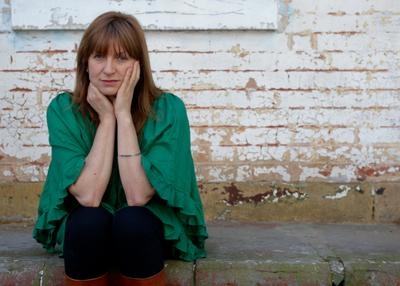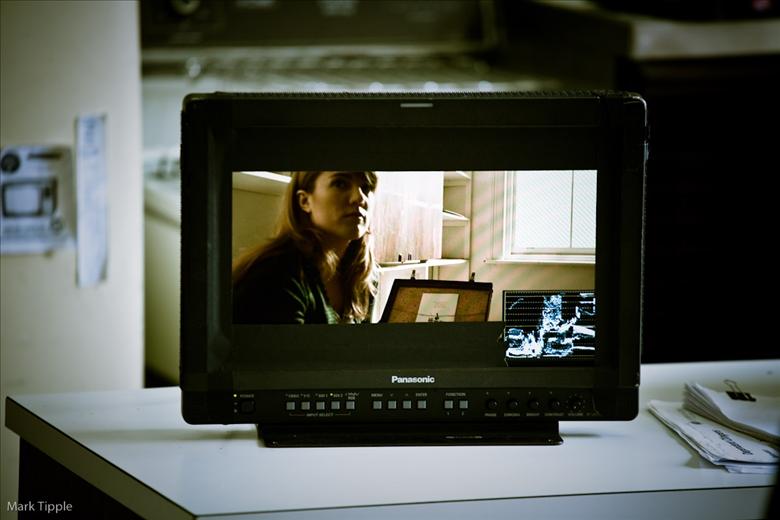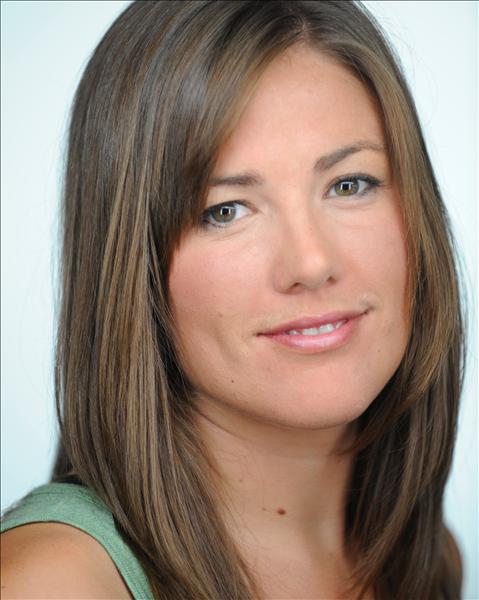59th SYDNEY FILM FESTIVAL PROGRAM ANNOUNCEMENT
 Wednesday, May 9, 2012 at 10:59AM
Wednesday, May 9, 2012 at 10:59AM Debutant festival director Nashen Moodley reveals his line-up for the 59th Sydney Film Festival before an eager throng of media, industry and political personalities.

The 12 features battling it out in the Official Competition strand of the 2012 Sydney Film Festival are particularly diverse, with only the glaring omission of any UK films from the line-up standing out. It is the most notably divergent path that newly-appointed Festival Director Nashen Moodley (pictured, below) has taken in his first year in charge; all other programming choices appear to safely reflect the same dedication to international cinema that his predecessor, Claire Stewart, adopted whilst in charge and which helped drive audience numbers and reinforce the events global relevance.
The Festival Jury, led by actress Rachel Ward and to be announced in full over the weeks leading up to the Opening Night on June 6, will be asked to cast judgement over the following dozen, chosen because they adhere to the guidelines which dictate they demonstrate ‘emotional power and resonance; are audacious, cutting-edge, courageous; and go beyond the usual treatment of the subject matter’:
ALPS. Greece | 2011 | 93 mins
Director: Yorgos Lanthimos | Screenwriters: Yorgos Lanthimos, Efthimis Filippou | Producers: Athina Rachel Tsangari, Yorgos Lanthimos | Cast: Aggeliki Papoulia, Aris Servetalis, Johnny Vekris.
BEASTS OF THE SOUTHERN WILD. USA | 2011 | 92 mins
Director: Benh Zeitlin | Screenwriters: Lucy Alibar, Benh Zeitlin | Producers: Michael Gottwald, Dan Janvey, Josh Penn | Cast: Quvenzhané Wallis, Dwight Henry.
CAESAR MUST DIE. Italy | 2012 | 76 mins
Directors, Screenwriters: Paolo Taviani, Vittorio Taviani | Producer: Grazia Volpi | Cast: Cosimo Rega, Salvatore Striano, Giovanni Arcuri.
DEAD EUROPE. Australia | 2012 | 84 mins
Director: Tony Krawitz | Screenwriter: Louise Fox | Producers: Iain Canning, Liz Watts, Emile Sherman | Cast: Ewen Leslie, Marton Csokas, Kodi Smit-McPhee.
GANGS OF WASSEYPUR PARTS 1 AND 2. India | 2012 | 160 mins x 2
Director: Anurag Kashyap | Screenwriters: Anurag Kashyap, Syed Zeeshan Qadri, Akhilesh Jaiswal, Sachin Ladia | Producers: Anurag Kashyap, Sunil Bohra, Guneet Monga | Cast: Manoj Bajpayee, Richa Chaddha, Tigmanshu Dhulia.
THE KING OF PIGS. South Korea | 2011 | 97 mins
Director, Screenwriter: Yuen Sang-ho | Producer: Cho Young-kag | Cast: Yang Ik-june, Oh Jeong-se, Kim Hye-na.
LORE. Australia, Germany | 2012 | 109 mins
Director: Cate Shortland | Screenwriters: Robin Mukherjee, Cate Shortland, Rachel Seiffert | Producers: Benny Drechsel, Karsten Stöter, Liz Watts, Paul Welsh | Cast: Saskia Rosendahl, Nele Trebs, André Frid.
MONSIEUR LAZHAR. Canada | 2011 | 92 mins
Director, Screenwriter: Philippe Falardeau | Producers: Luc Déry, Kim McCraw | Cast: Fellag, Sophie Nélisse, Émilien Néron.
NEIGHBOURING SOUNDS. Brazil | 2012 | 131 mins
Director, Screenwriter: Kleber Mendonça Filho | Producer: Emilie Lesclaux | Cast: Irandhir Santos, Gustavo Jahn, Maeve Jinkings.
ON THE ROAD. USA | 2012 | 140 mins
Director: Walter Salles | Screenwriter: José Rivera | Producers: Charles Gillibert, Nathanaël Karmitz, Rebecca Yeldham | Cast: Sam Riley, Garrett Hedlund, Kristen Stewart, Kirsten Dunst, Viggo Mortensen.
TABU. Portugal, Germany, Brazil, France | 2012 | 110 mins
Director: Miguel Gomes | Screenwriters: Miguel Gomes, Mariana Ricardo | Producers: Sandro Aguilar, Luís Urbano | Cast: Teresa Madruga, Laura Soveral, Ana Moreira, Carlotto Cotta.
TODAY. France, Senegal | 2011 | 86 mins
Director, Screenwriter: Alain Gomis | Producers: Eric Idriss Kanango, Oumar Sall, Gilles Sandoz | Cast: Saül Williams, Djolof M’Bengue, Anisia Uzeyman.
Opening Night honours have been bestowed upon Peter Templeman’s Not Suitable for Children, a cancer-dramedy set amongst Sydney’s Inner-west hipsters and starring Ryan Kwanten. Closing the Festival will be the US independent release Safety Not Guaranteed (pictured, above), directed by first-timer Colin Trevorrow and described by the Festival guide as “a surprising and very funny sci-fi comedy with heart.” That the Festivals’ most high-profile slots are programmed with decidedly younger-skewing films suggests that Moodley is determined to keep the Sydney Film Festival (and his tenure) relevant to future generations.
 The Dendy Organisation has re-signed as key sponsor for the Australian Short Film Award category, which contains films that have already found favour in Berlin (Matthew Moore’s Julian and Billie Pfeiffer’s Bino), the South-x-Southwest Festival (Marieka Walsh’s The Hunter) and Cannes (Michael Spiccia’s Yardbird). Eight factual films will contest for the Foxtel Australian Documentary Prize, won last year by Sophie Hyde’s and Bryan Mason’s Life in Movement; the scheduled works include Despite The Gods, Penny Wozniak’s character study of director Jennifer Lynch, and the world premiere of Utopia, the latest from SFF veteran Bruce Petty (Leisure, 1976; Global Haywire, 2007).
The Dendy Organisation has re-signed as key sponsor for the Australian Short Film Award category, which contains films that have already found favour in Berlin (Matthew Moore’s Julian and Billie Pfeiffer’s Bino), the South-x-Southwest Festival (Marieka Walsh’s The Hunter) and Cannes (Michael Spiccia’s Yardbird). Eight factual films will contest for the Foxtel Australian Documentary Prize, won last year by Sophie Hyde’s and Bryan Mason’s Life in Movement; the scheduled works include Despite The Gods, Penny Wozniak’s character study of director Jennifer Lynch, and the world premiere of Utopia, the latest from SFF veteran Bruce Petty (Leisure, 1976; Global Haywire, 2007).
Also returning are other award categories such as The Community Relations Commission (CRC) Award, given to the film whose content best reflects Australia’s multicultural diversity, and the popular Showtime Movie Channels Audience Award, reflecting the punter’s Festival favourite (won in 2011 by Shane Meadows’ This is England ’86). Announced at this morning's program launch was the 2012 Peter Rasmussen Innovation Award winner – Justin Wight, honoured for his multi-platform, trans-media project Double Happy vs The Infinite Sadness.
The breadth of films on offer over the 2012 event is statistically staggering - 157 titles: 56 features, 40 documentaries, 32 short films, 14 retrospective titles, 18 world premieres (11 features, 7 shorts), 107 Australian premieres, 30 Australian productions (5 features, 7 documentaries, 18 short films) and films from 50 countries in 48 languages. Experienced Festival goers will know that high-profile entrants can disappoint and bolters can unexpectedly emerge from the pack to win over unsuspecting patrons. With that in mind, the Best of the Fest on paper would include Nadine Labaki’s follow-up to Caramel, Where Do We Go Now?; Israeli writer-director’s Nadav Lapid’s Tribeca hit, Policeman; Nikolaj Arcel’s A Royal Affair, which return from the Berlinale with Best Actor and Best Screenplay honours; Gerardo Naranjo’s Mexican thriller Miss Bala; How I Met Your Mother star Josh Radner’s second indy feature Liberal Arts, starring It-girl Elizabeth Olsen (star of SFF 2011 hit, Martha Marcy May Marlene); from The Netherlands, Sacha Polak’s existential sex-vs-love dramedy, Hemel (pictured, below); Russia’s winner of Venice’s Golden Lion award, Faust, from director Alexander Sokurov; and, the world premiere of the Australian film, Being Venice, from writer director Miro Bilbrough.

The iconic State Theatre is back in all its glory after the 2011 event had the venue space truncated due to renovations. Film’s afforded the opulence of one of Sydney’s last great theatrical venues include Wes Anderson’s Moonrise Kingdom, Michael Haneke’s Amour, Ken Loach’s The Angel Share, Rachel Perkins’ Mabo, Oren Moverman’s Rampart and Andrea Arnold’s Wuthering Heights.
In addition to the first-run features, sidebar offerings will include a retrospective of Italian great Bernardo Bertolucci, a selection of classics from the library of 100-year old Japanese studio giant Nikkatsu, and a focus on the independent cinema of India. The influence of Moodley’s past-life as Director of Asia/Africa Programs at the Dubai International Film Festival can be strongly felt in that regard. Variety critic and genre buff Richard Kuipers returns to program the ‘Freak Me Out’ strand of horror and fantasy films, which this year includes works from France (Alexandre Bustill and Julien Maury’s Livid), the US (William Friedkin’s Killer Joe), the UK (Keith Wright’s Harold’s Going Stiff) and Japan (Shunichiro Miki’s The Warped Forest).
SCREEN-SPACE will be covering the events of the day as they unfold, with blogs, reviews and interviews being uploaded morning and night over the course of the Festival’s twelve days.









